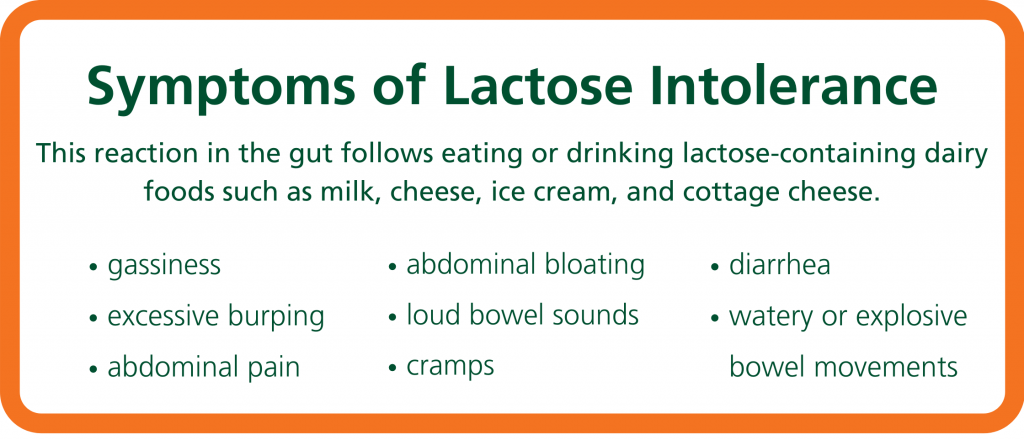Can You Suddenly Develop Lactose Intolerance?

Key Takeaways
- Lactose intolerance, the inability to digest lactose found in dairy products, can develop at any age and is often due to a decrease in the production of lactase enzyme.
- Symptoms of lactose intolerance include bloating, diarrhea, and gas, which occur 30 minutes to 2 hours after consuming dairy products.
- While there’s no cure for lactose intolerance, symptoms can be managed by moderating the intake of dairy products, using lactase supplements, or consuming lactose-free alternatives.
If enjoying ice cream, mac and cheese, or coffee creamer leads to excessive burping, abdominal pain, and diarrhea — you may be lactose intolerant.
Even if you’ve never had an issue digesting dairy in the past, this uncomfortable and sometimes embarrassing condition can develop as you age. It’s not as rare as you might think. In fact, approximately 68% of adults around the world experience some degree of difficulty digesting dairy foods.
“Many factors can trigger lactose intolerance or lactase deficiency, or it can develop over time,” says Elizabeth Ferrer, RD, LD/N, CDCES, CSOWM, a registered dietitian with the University of Miami Health System.
“As we age, we tend to replace milk with other foods. This leads to a decreased amount of lactase (the enzyme responsible for breaking down lactose sugar) activity and production.
Some adults produce enough lactase enzyme to digest the amount of dairy in a typical adult diet. But, lactase production can fall off sharply by the time you reach adulthood (called primary lactose intolerance), making milk products difficult to digest.”

– genetics: lactose intolerance can run in families
– gastrointestinal surgery
– injury or damage to the small intestine
– cancer treatments
– conditions such as Cohn’s Disease, Celiac Disease, Irritable Bowel Syndrome/Disease, and Small Intestinal Bacterial Overgrowth
It may be difficult for you and your doctor to tell if an inability to digest lactose is causing your symptoms because other conditions create similar gastrointestinal distress.
Keeping a food diary is one way to start narrowing down potential causes.
“It’s helpful to keep a food diary for one to five days, recording what you eat, including the amounts of all food and beverages, and how you feel hours later,” Ferrer says. “This information will be useful when you visit a registered dietitian or gastroenterologist for a full evaluation. During your visit (in office or via telehealth), your health care provider will ask for at least one day of a diet recall or a food frequency questionnaire.”
Therefore, doing this before your visit will save time and offer insight into which foods or ingredients cause your digestive problems.
In addition, your physician may order a lactose tolerance blood test or a hydrogen breath test.
With a proper diagnosis, you can make dietary changes to avoid the uncomfortable gas, cramping, and trips to the bathroom associated with this condition. If your lactose intolerance began with a related gastrointestinal condition or disease, effectively managing the underlying illness may help resolve it.
The best advice is to stop eating and drinking food containing lactose. However, they are a primary source of calcium, a mineral that’s important to good health.
“When you avoid milk and dairy,” Ferrer says, “you need to get calcium from other foods.”
Non-dairy sources of calcium include:
– sardines
– canned salmon
– tofu (calcium-fortified)
– shellfish
– turnip greens
– collard greens
– kale
– dried beans
– broccoli
– calcium-fortified orange juice
– calcium-fortified soy milk
– blackstrap molasses
– almonds
“By following appropriate advice by a registered dietitian, most people with lactose intolerance can enjoy some lactose-containing foods without symptoms,” Ferrer says.
It may take time for your body to re-adjust to lactose consumption, or you may be able to find certain dairy products that don’t lead to your worst symptoms. First, try eating solid food with a small amount of dairy, which will help slow digestion and may reduce the symptoms.
These dairy items may be okay for you to consume in moderation because they have lower levels of lactose:
– butter
– aged/hard cheeses
– natural cheeses
– yogurt low in sugar, high in probiotic cultures
– kefir (a fermented drink similar to yogurt)
– heavy cream
– whey protein powders
“Some people with this condition can tolerate up to 10 to 12 grams of lactose per day,” Ferrer says.
Pay attention to dairy portion sizes, and keep track of which foods and amounts leave you regretting your choices.
Other options include lactose-free milk, ice cream, and cottage cheese, which are available at most grocery stores. Similarly, you can try an over-the-counter lactase enzyme supplement pill or chewable tablet. If you take it just before consuming lactose-containing food, it can provide your body with the enzyme it needs to break down lactose sugar effectively.
References
- https://www.niddk.nih.gov/health-information/digestive-diseases/lactose-intolerance/definition-facts#common
- Elizabeth Ferrer, R.D., LD/N, CNSC, registered dietitian with the University of Miami Health System
Dana Kantrowitz is a contributing writer for UMiami Health News. Expert reviewed and approved again in August 2025.
Originally published on: February 03, 2021
Tags: diarrhea, Elizabeth Ferrer, food allergies, lactose intolerance, stomach cramps, symptoms of lactose intolerance
